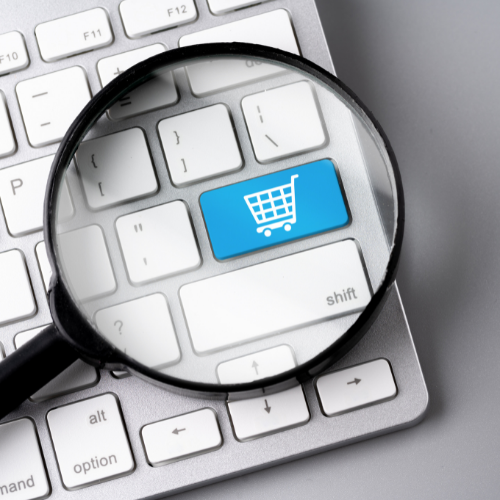What is e-procurement?
E-procurement, which can be translated as "digitalized procurement", consists in dematerializing the 3 stages of the BtoB purchasing process: selection from a product catalog, ordering, invoicing.
On the face of it, these steps are the same as purchases made by a private individual on a BtoC online sales site. So it doesn't seem all that difficult to digitize. And yet, even in 2021, the majority of purchasing departments make their selection from a PDF catalog, place their order by telephone and receive a paper invoice!
In reality, this purchasing process involves many small additional steps and adaptations specific to each sector and even each company:
- Service providers have catalogs tailored to each type of customer (distributor or reseller, SME, key account, craftsman, etc.).
- Product selection is more complex than in BtoC, and is not based solely on value for money. Selection criteria are varied: technical characteristics, quantity, availability, additional service.
- Rates are negotiated in advance, sometimes with a multi-year framework contract.
- Every company has an order validation workflow, which may pass through the end-user, the purchasing department, management and accounting.
- Prices excluding VAT may be affected by multiple VATs, sliding-scale tariffs, customs duties in the case of import/export...
The challenge of e-procurement is to take all these realities into account and automate this process efficiently.

The benefits of digital BtoB purchasing management
A survey carried out by Fed Supply & Leyton in 2020 reveals that 49 % of companies surveyed claim not to be using e-procurement solutions, despite the fact that over two-thirds of them manage annual purchasing volumes in excess of €10 million.
In this Fed Supply & Leyton study, companies convinced by e-procurement cite three main benefits of e-procurement:
- Direct connection with their suppliers (automatic update of pricing data, commercial conditions, etc.).
- Budgetary control
- The digitization of processes, in particular for order creation, purchase requisitions, etc.
The financial impact of this digitization is obvious, and should convince companies to take the plunge: automation reduces the cost of low-value-added labor. APECA (the association working for more efficient public purchasing) has calculated the difference in cost between a standard transaction and a digital 100% transaction: from €95 to €19. By reducing the number of manual data entry steps (purchase order, validation request, etc.), we also reduce the error rate and gain in speed. There's no more downtime, no more dunning, no more administrative management.
And finally, teams can concentrate on analyzing the data accumulated in this automated system to make the right decisions as part of a BtoB purchasing strategy. Budget management, identifying areas for improvement, risk management and optimizing purchasing forecasts.
To achieve this, it is essential to be able to read all the data accumulated with these digitalization tools in dashboards tailored to your needs. This is the purpose of the NodalVision from Soledis.
In concrete terms, how can you dematerialize your BtoB purchasing process?
- The punch-out
Punch-out is the connection between a supplier's product catalog and a customer's/buyer's purchasing system. Products appearing on the buyer's online sales platform are selected from the supplier's catalog, with prices negotiated upstream by contract. Orders placed from this catalog are sent directly to the customer's e-procurement software.

The second aspect of e-procurement is the transformation of e-mail or paper communications into EDI messages. Software programs now communicate with each other, automatically triggering actions. Purchase orders, validation requests and invoices no longer need to be PDFs or paper mail. Advances in document certification make it possible to dematerialize all these stages.
E-procurement is one of the major challenges of the years to come, and Soledis, as an expert in BtoB e-Commerce, aims to provide flexible and robust solutions based on the Prestashop open source model, rather than on the ERP model, often criticized for being cumbersome.
